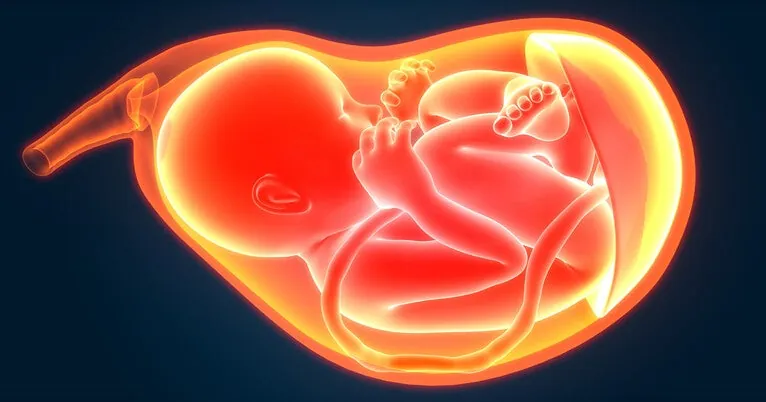
Unveiling the Jaw Evolution: How Ancient Fish Shaped the Path to Modern Animals
2025-09-05
Author: John Tan
From the Depths of Time: The Backbone of Evolution
Long before dinosaurs roamed the Earth, fish were carving a revolutionary path for life on land with a groundbreaking innovation: jaws. These incredible structures evolved not just for biting but served a multitude of purposes—cracking shells, digging into the seabed, defending against predators, and transporting young fish.
Beneath the Surface: A Tale of Two Fish
Around 400 million years ago, two main groups of fish shaped the oceans: lobe-finned and ray-finned fish. Lobe-finned fish featured robust, muscular fins, enabling unique movements. In contrast, ray-finned fish had lighter and more flexible fins supported by delicate spines. Today, about 33,000 ray-finned species thrive in waters worldwide, from vibrant goldfish to formidable tuna, while lobe-finned counterparts dwindle to just eight species, including the coelacanth and lungfish.
A Surprising Turn: Who Really Led Evolution?
A groundbreaking study from the University of Michigan reveals that between 359 and 423 million years ago, it was the lobe-finned fish that were the frontrunners in evolutionary advancements. Their jaw structures were rapidly evolving, showcasing an impressive array of adaptations, while ray-finned fish took a much slower evolutionary ride.
Decoding Ancient Fossils: The Science Behind the Evolution
To unearth these revelations, researchers employed cutting-edge CT scans to model 86 fossilized fish jaws from the Silurian and Devonian periods, dating back over 443 million years—before the first forests sprouted. By digitally analyzing these ancient jaws, they examined their shapes and mechanical functions. The results revealed a crucial insight: the efficiency of these jaws significantly contributed to the fish's biting power.
Lungfish: The Jaw for Power
Particularly, lungfish jaws underwent remarkable transformations during the Devonian Period, becoming larger and more muscular, allowing them to crush hard-shelled prey like early clams. This evolution hints at adaptive feeding strategies that were influenced by the ecosystems around them.
Patterns of Change: The Journey of Jaw Evolution
Research highlighted instances of adaptive radiation, where specific fish rapidly diversified their jaw forms and sizes in response to environmental pressures. Interestingly, some fish adapted quickly, while others remained relatively unchanged for eons—only to later transition onto land.
Reevaluating Evolution: The Legacy of Ancient Fish
This fascinating study illustrates that evolution is far from linear. The success of a species today doesn’t guarantee its past prowess. Once, lobe-finned fishes led in jaw innovation, paving the way for significant vertebrate evolution, which would ultimately give rise to amphibians, reptiles, birds, and even mammals.
Echoes from the Past: Learning from Ancient Life
Emily Troyer, a lead researcher, emphasized the immense learning potential from our ancient past. Without these fossil records, the intricate story of jaw evolution and its reversals could have been lost forever. The research stands as a testament to the adaptability and innovative nature of life on Earth, revealing how evolutionary pressures have shaped diverse life forms for hundreds of millions of years before the age of dinosaurs.
Conclusion: Fish and Their Epic Evolutionary Saga
Thus, the study serves not only as an academic revelation but as a reminder of the incredible journey fish have taken through eons of evolutionary history. As Troyer aptly puts it, 'Fishes are awesome,' and their legacy continues to shape the world we know today.




 Brasil (PT)
Brasil (PT)
 Canada (EN)
Canada (EN)
 Chile (ES)
Chile (ES)
 Česko (CS)
Česko (CS)
 대한민국 (KO)
대한민국 (KO)
 España (ES)
España (ES)
 France (FR)
France (FR)
 Hong Kong (EN)
Hong Kong (EN)
 Italia (IT)
Italia (IT)
 日本 (JA)
日本 (JA)
 Magyarország (HU)
Magyarország (HU)
 Norge (NO)
Norge (NO)
 Polska (PL)
Polska (PL)
 Schweiz (DE)
Schweiz (DE)
 Singapore (EN)
Singapore (EN)
 Sverige (SV)
Sverige (SV)
 Suomi (FI)
Suomi (FI)
 Türkiye (TR)
Türkiye (TR)
 الإمارات العربية المتحدة (AR)
الإمارات العربية المتحدة (AR)